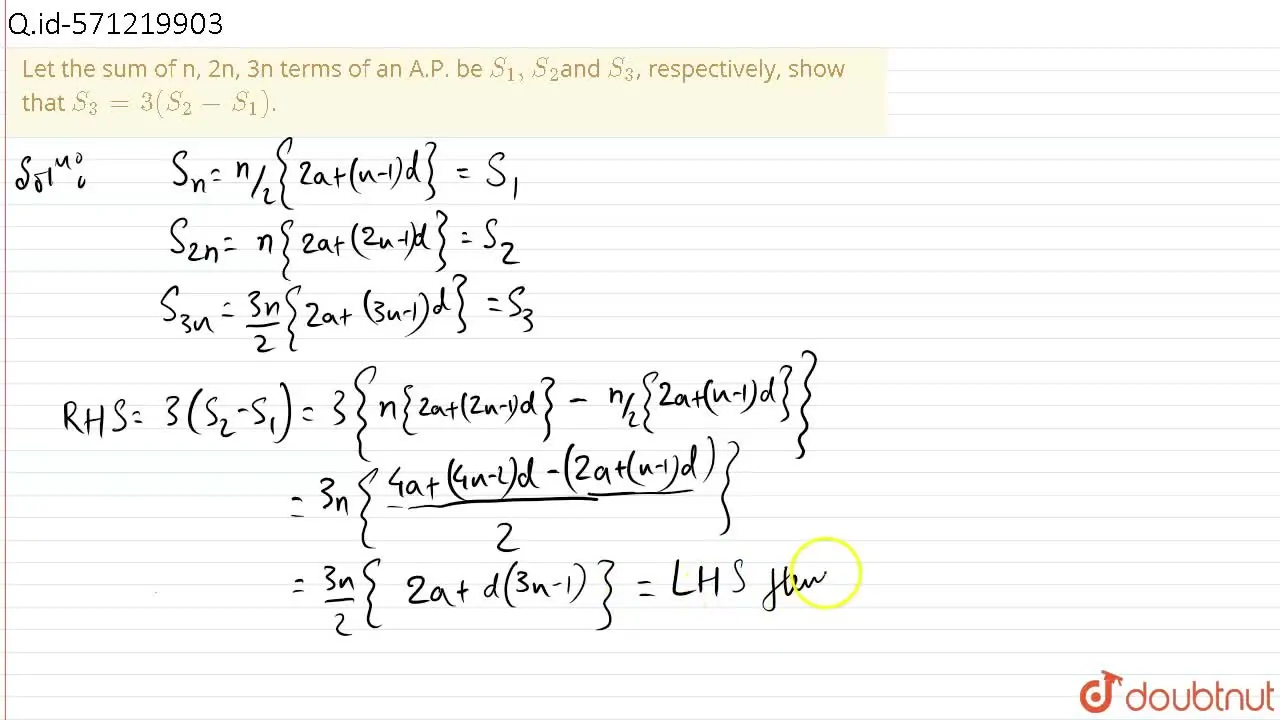Let the sum of n, 2n, 3n terms of an A.P. be and , respectively, show that .
The correct Answer is:N/a
Let the first term be 'a' and common difference be 'd' of the A.P.
The sum of 2n terms of A.P.
and the sum of 3n terms of the A.P.
Now, subtracting equation (1) from (2),
[From equation (3)]
Therefore Hence Proved.
Related Playlists
- BOOK - NAGEEN PRAKASHAN ENGLISHCHAPTER - SEQUENCE AND SERIESEXERCISE - Exercise 9.410videos
SEQUENCE AND SERIES
- BOOK - NAGEEN PRAKASHAN ENGLISHCHAPTER - RELATIONS AND FUNCTIONSEXERCISE - MISCELLANEOUS EXERCISE12videos
RELATIONS AND FUNCTIONS
- BOOK - NAGEEN PRAKASHAN ENGLISHCHAPTER - SETSEXERCISE - MISC Exercise16videos
SETS
Similar Questions
The sum of n, 2n, 3n terms of an A.P. are S1,S2,S3 respectively. Prove that S3=3(S2−S1)
View SolutionThe sum of n,2n,3n terms of an A.P. are S1S2,S3, respectively. Prove that S3=3(S2−S1).
View SolutionIf the sum of n,2n,3n terms of an AP are S1,S2,S3 respectively . Prove that S3=3(S2−S1)
View SolutionIf the sum of n, 2n, 3n terms of an A.P are S1,S2,S3, respectively, prove that S3=3(S2−S1).
View SolutionIf the sum of n, 2n and infinite terms of G.P. are S1,S2 and S respectively, then prove that S1(S1−S)=S(S1−S2).
View SolutionIf S1,S2,S3 be respectively the sums of n,2n,3n terms of a G.P., then prove that (S1)2+(S2)2=S1(S2+S3) .
View SolutionIf S1,S2,S3 are the sums of first n natural numbers, their squares and cubes respectively, show that 9S22=S3(1+8S1).
View SolutionIf S1,S2andS3 be respectively the sum of n, 2n and 3n terms of a G.P., prove that S1(S3−S2)=(S2−S1)2
View SolutionIf S1,S2,S3are the sum of first n natural numbers, their squares and their cubes, respectively, show that 9S22=S3(1+8S1).
View SolutionLet Sn denote the sum of first n terms of an A.P. If S2n=3Sn, then find the ratio S3n/Sn.
View Solution


